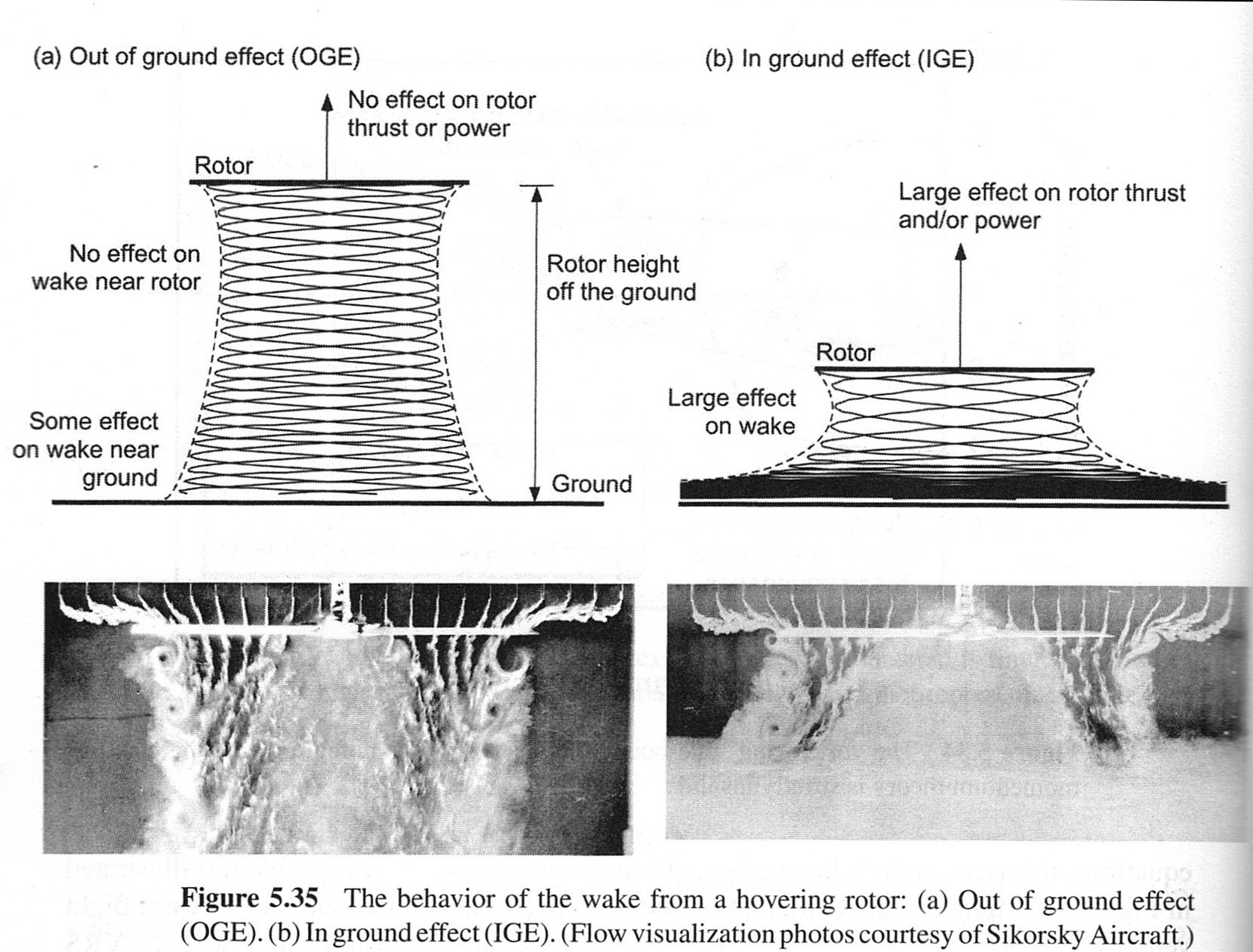In a quad setup like the Air One where back propellers are at different ground clearance than the front propellers, what are the effects of such setup vs if all props had the same ground clearance.

(source)
For the purpose of this question let's asume the back props are at double the front props clearance as shown in the image. Also let's asume the aircraft weight is perfectly balanced.
For a straight vertical takeoff, will back and front props have to spin at different speeds? Will all props generate the same lift at the same RPM during takeoff? Does the RPM needs to be adjusted on the front/back propellers to keep the aircraft balanced as the aircraft increases altitude(no ground effect)?
Yes, I know the Air One example technically is not a quad but a Octacopter, just ignore that.

